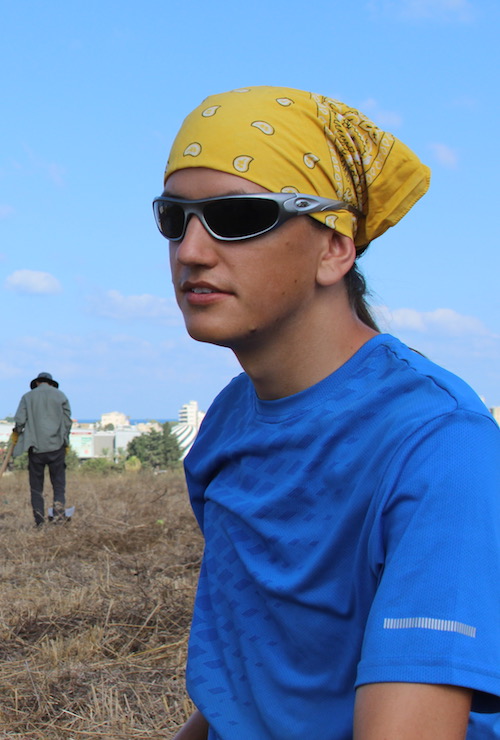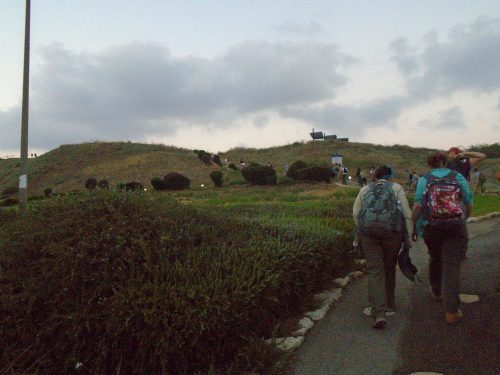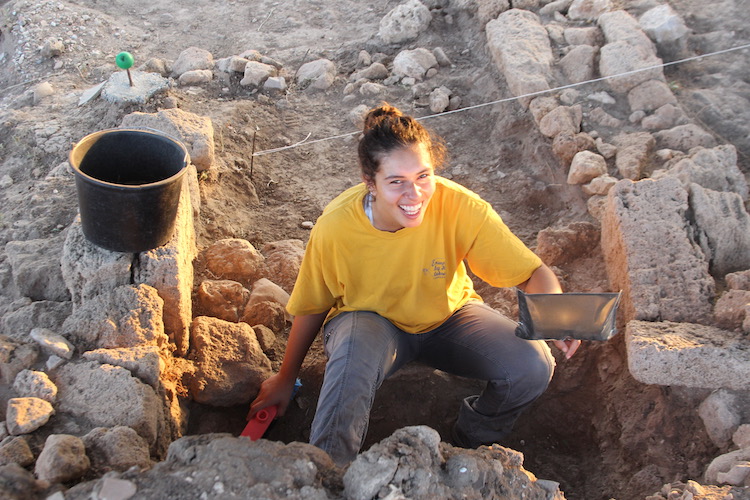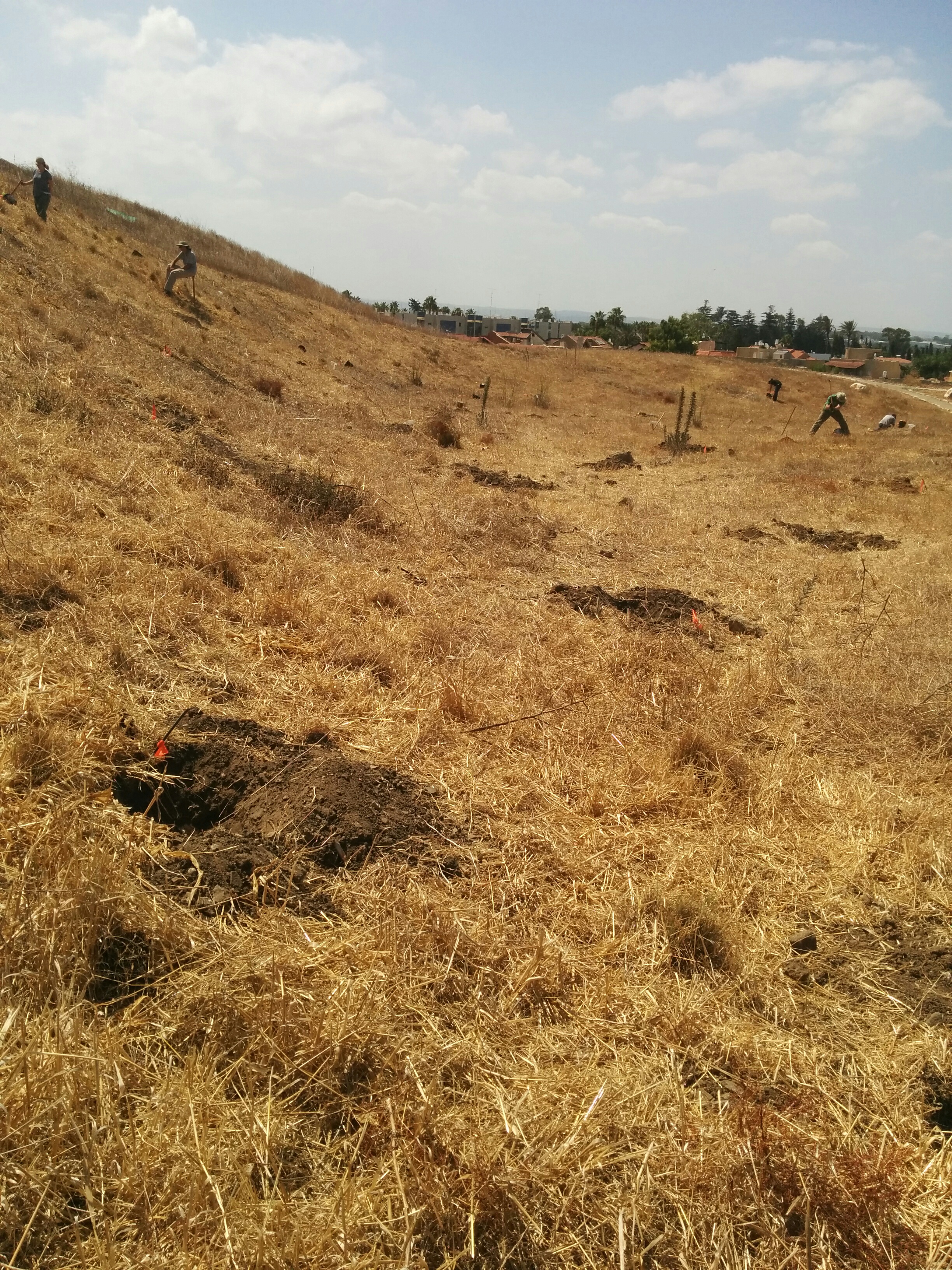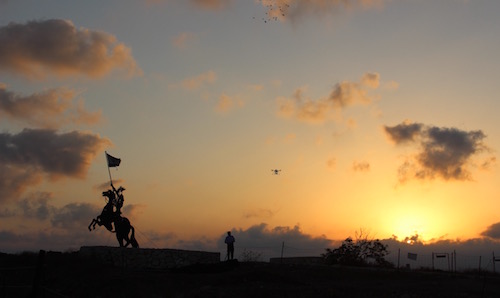By Michael Flaig
By Michael Flaig.
Arising before dawn from our humble rooms we eat a small breakfast consisting of bread, fruit, and some sort of spread as well as coffee or tea. The small bit of television we watch is Israeli music videos from eras we can only guess, but we watch, captivated, anyway. With this small meal we drag our tired bodies outside and onto a waiting bus which will take us to meet the rising sun at our working place. Most of us will work in squares under shade protected from the suns rays but not all of us. Some of us, chosen for this task by our lord and surveyor, will get to work in the greatest job on Earth… survey.
What makes a man choose survey over squares? After all survey is in the sun and is back breaking work, which will be backfilled that very day. It is hot, sweaty, dirty work that could be compared to prison work by an unenlightened person, yet it draws people towards it. Long has this been debated and long will it be debated, but I, aa a survey man and reluctant occasional square man, can say that it is a feeling you have, a dedication to the lord and surveyor, and his mentor the all father of Tel Akko survey, who is here, yet not here at all times.
The sun rises over the distant mountains to the East and we pray that we make it through another day of heat and work. The tools are gathered – the implements of faith: the pickaxe and the terea, we are guided to our holes and begin to dig our 40 by 40 by 40 cm pits that are the calling card of our faith. We dig and dig looking for pottery and other important remains that give us our purpose. Guided by our holiest of objects, the total station, that is so holy no one but the lord and surveyor and those he hand picks can touch it. They, however, still do not know all of its secrets. We find the places where the next hole will be dug. The holes we dig carve up the tel like swiss cheese as the ritual of digging continues.
We dig. We dig to music which can vary to be different genres but the music must have a digging rhythm to help us dig. While we dig, we find all manner of things from ancient trash to modern trash and onions. Survey onions are special onions, these onions are poisonous and can irate skin by just touching the skin. Despite this, the onions hold a special place in the heart of survey. One of our favorite past times is throwing things over the sides of the hill. The hill is a special hill, as it is the tel, and had a rampart at one time in its history. By throwing onions over the side of the hill, we are experimenting with how effective the defenses could have been. We also have a javelin throwing team in survey headed by our lord and surveyor.
One of the rights of passage in survey is to hold the prism rod. The prism rod is a sacred object as it has the holy prism on top that allows us to plot new holes and already dug holes. All survey members must have experience in holding this sacred device. The call goes out over the walkie talkies to move a certain distance that the holy of holies informs us of.
As we toil away at the ground we hear the magic words of “breakfast time”. When we hear these words, we know it means that just for a bit we are out of the sun and get food. Tel breakfast is the best breakfast as everything tastes better after hard work. During this communal meal we talk about all the hardships we have had so far and about what we are digging. When the orders to get back to work are given, we return to digging holes or plotting in new holes. At high noon, as the sun reaches its zenith, we start to pack up to head back to our living space for lunch, lecture, and other things. We go to sleep early so we can wake up and do it all over again.
